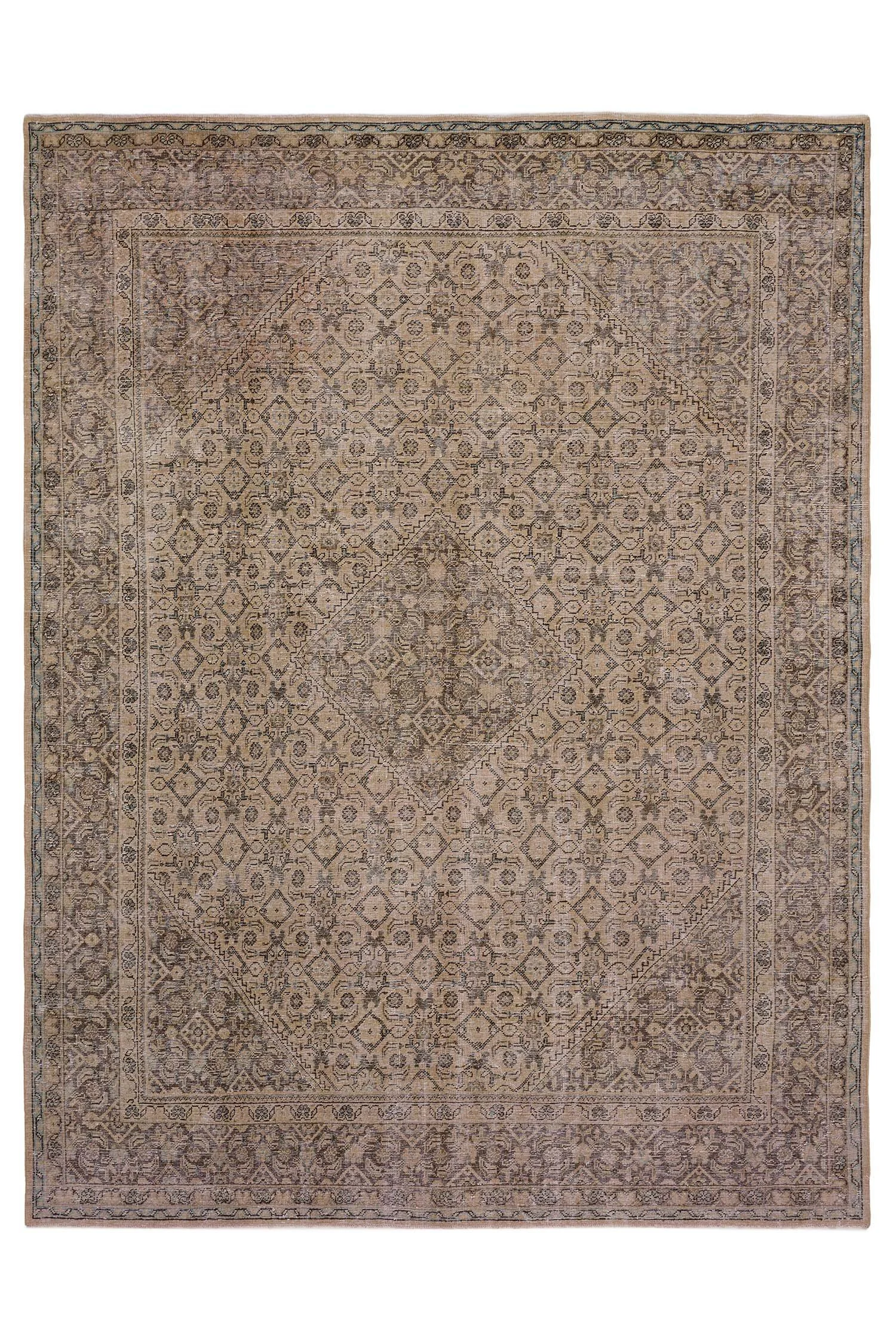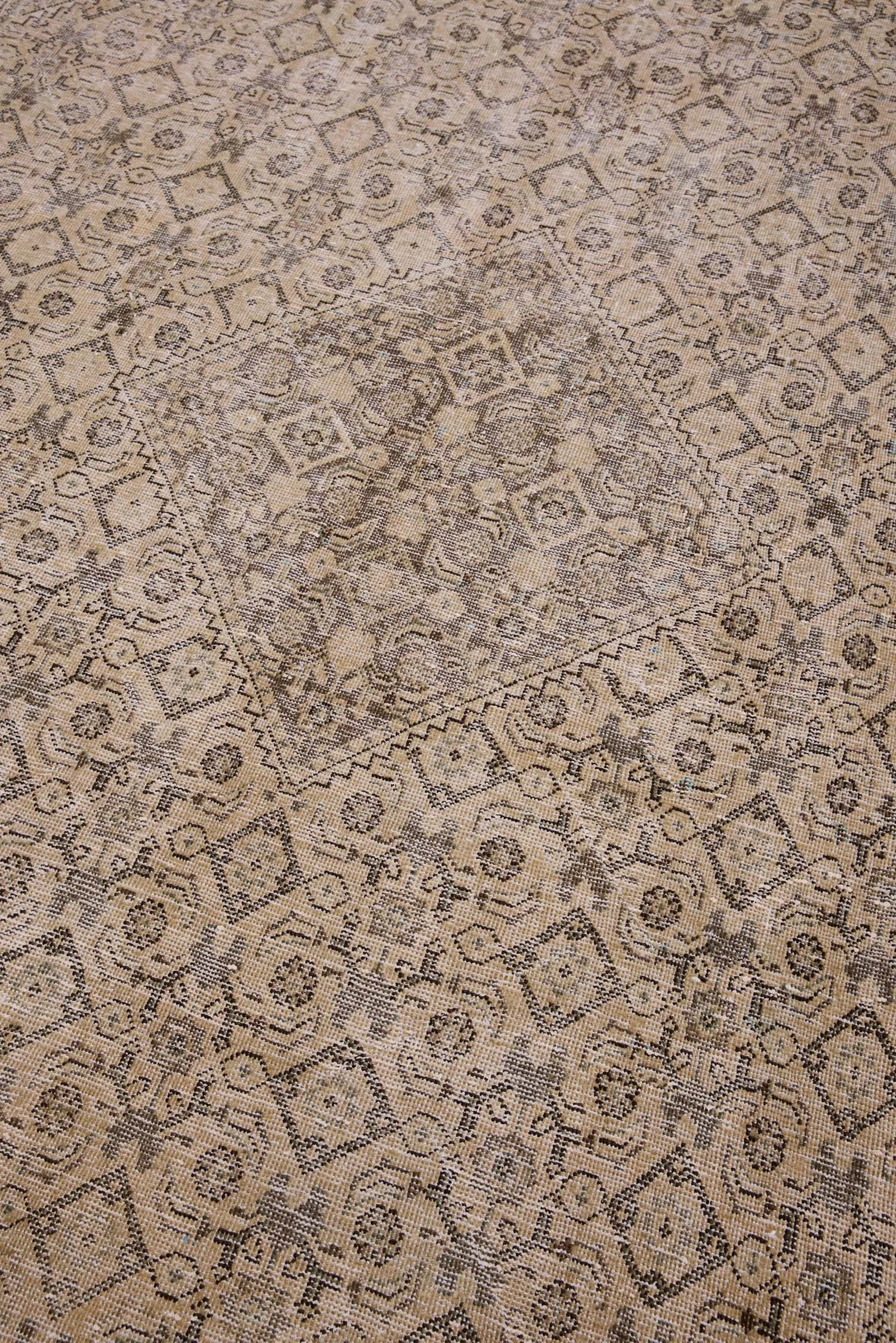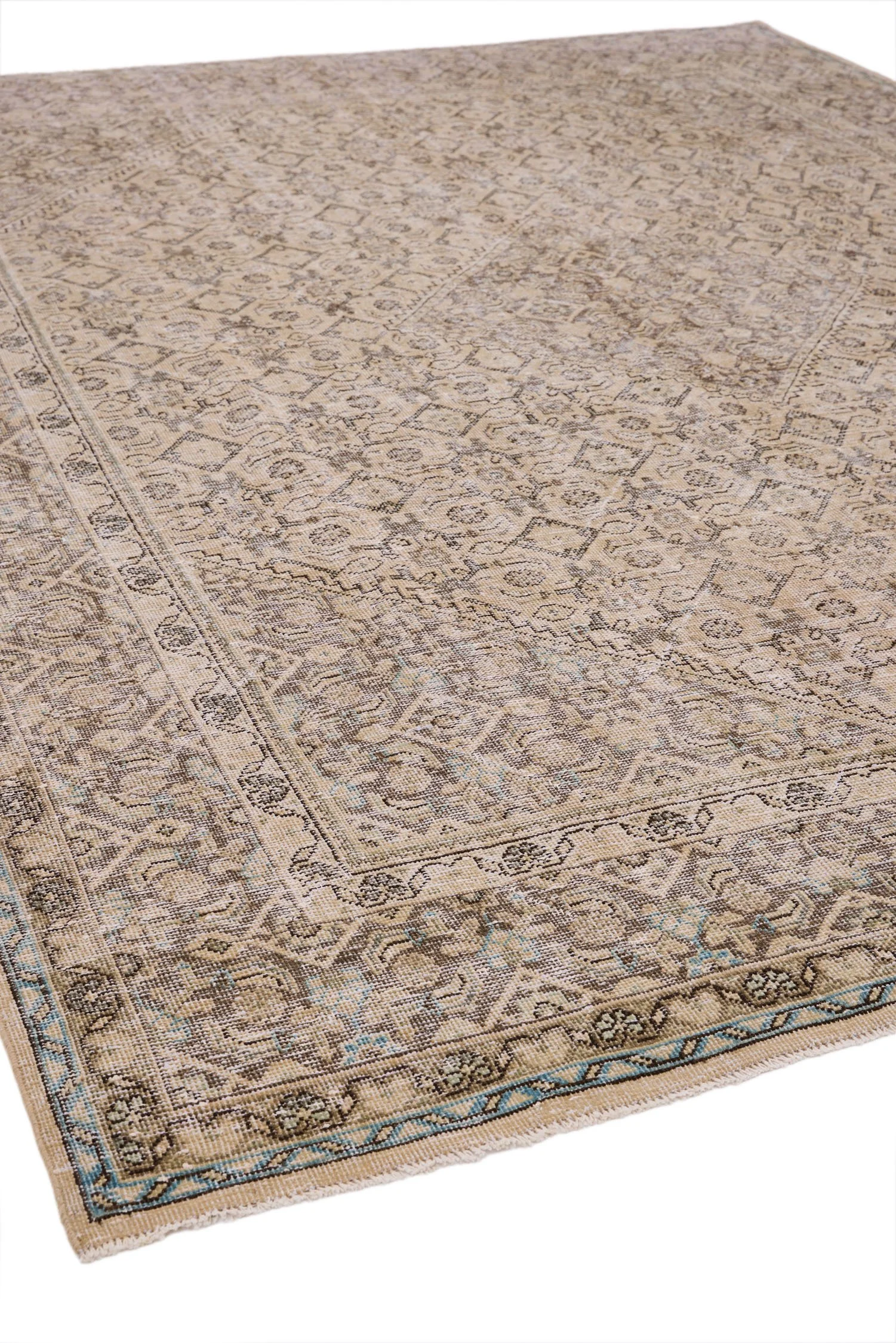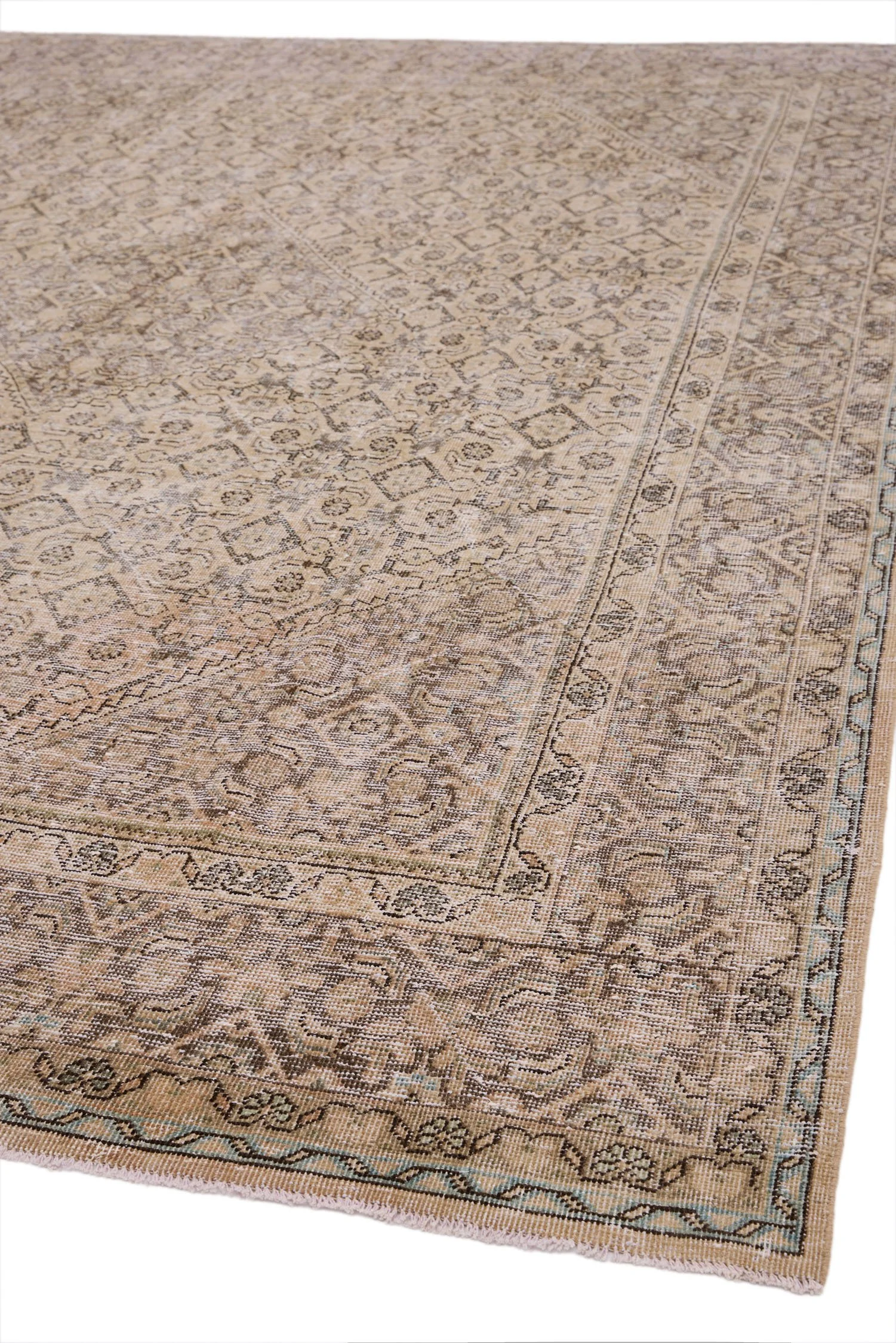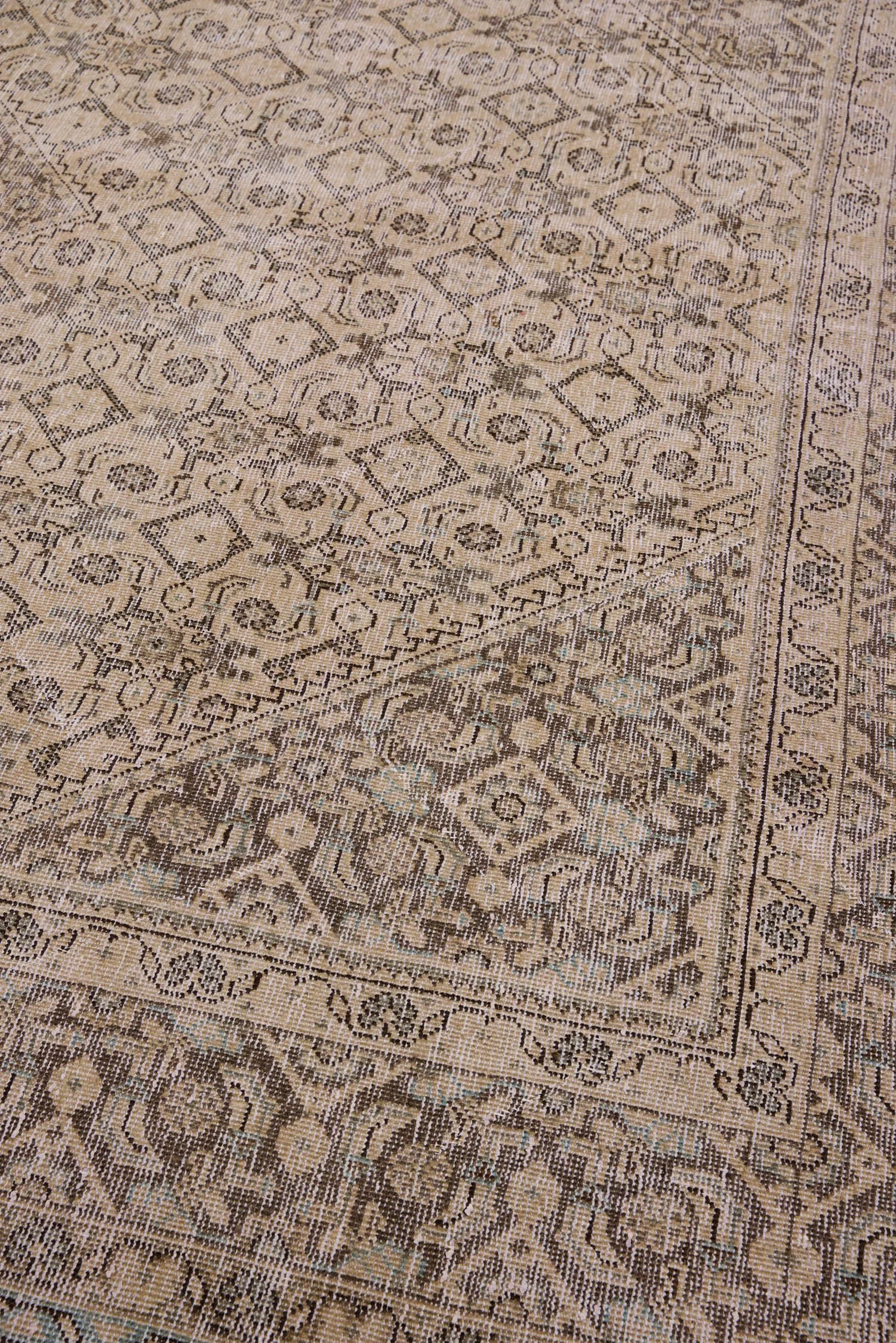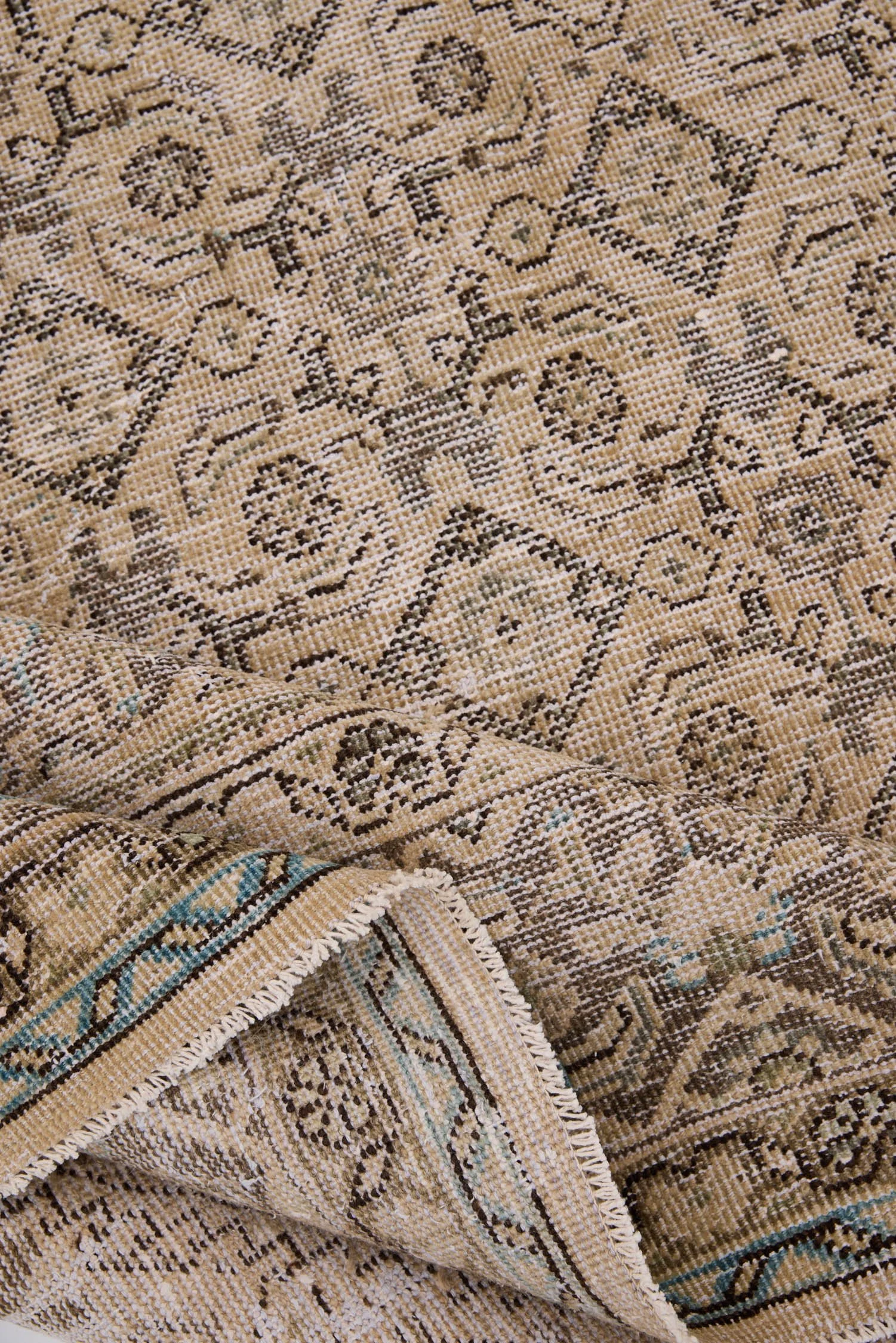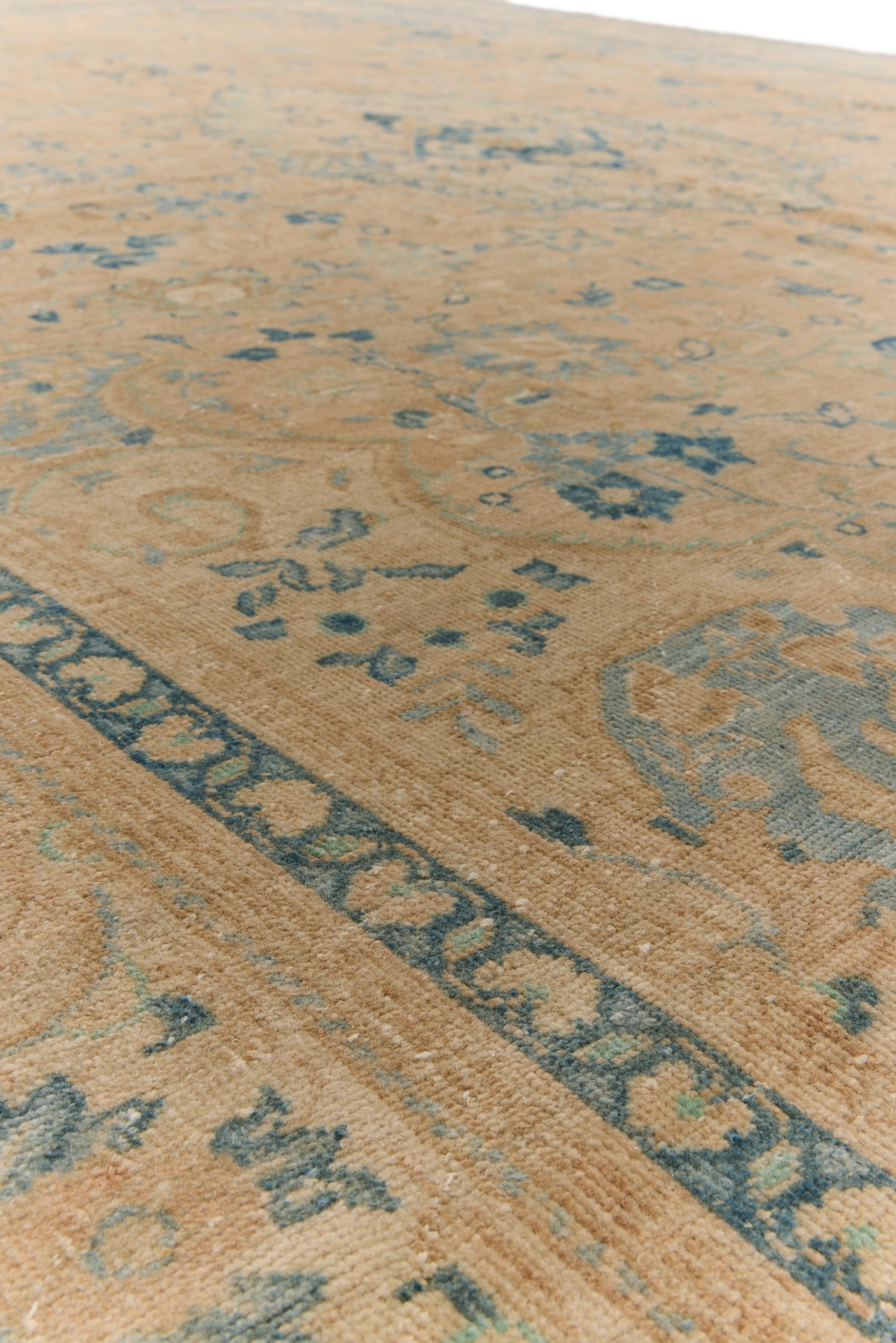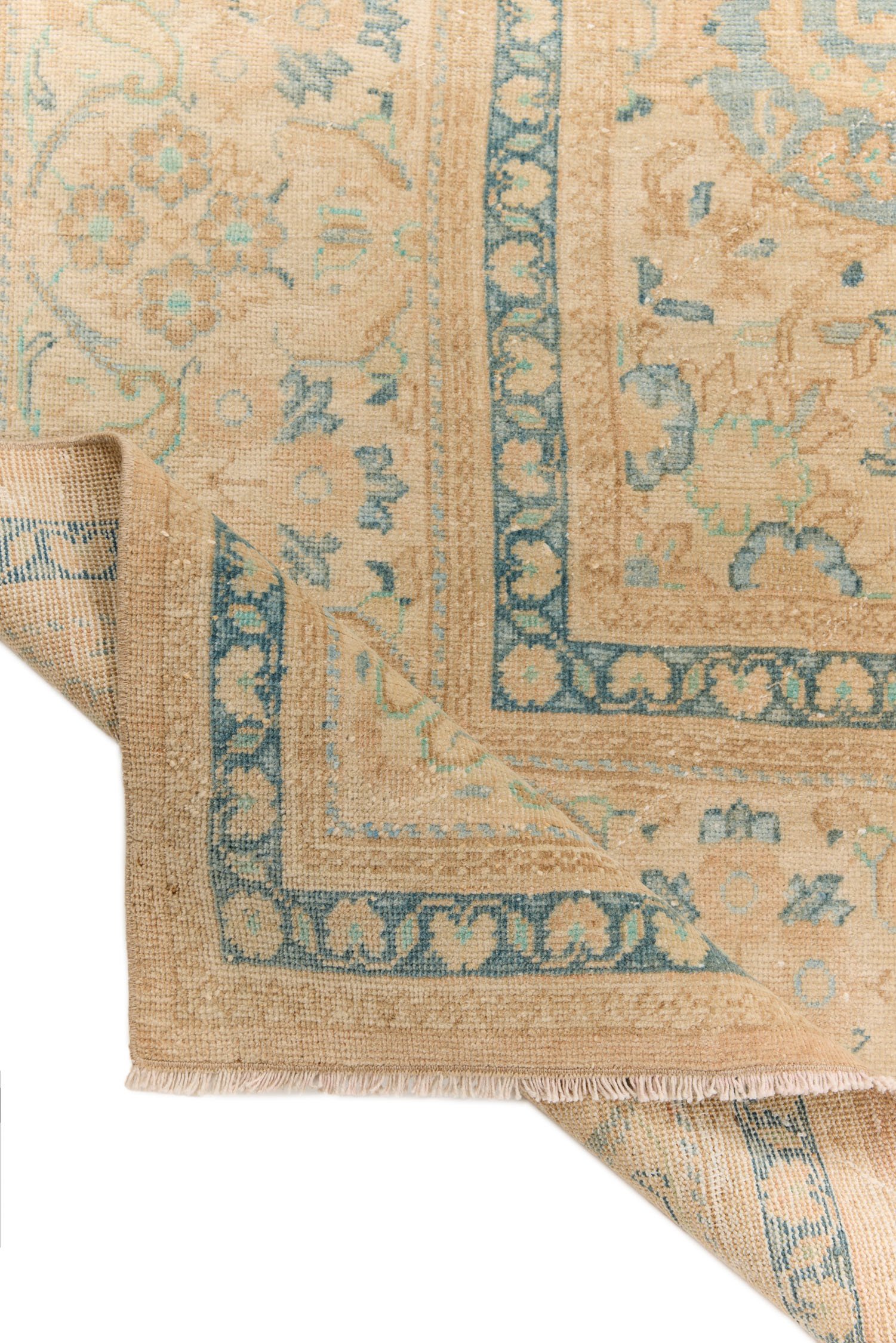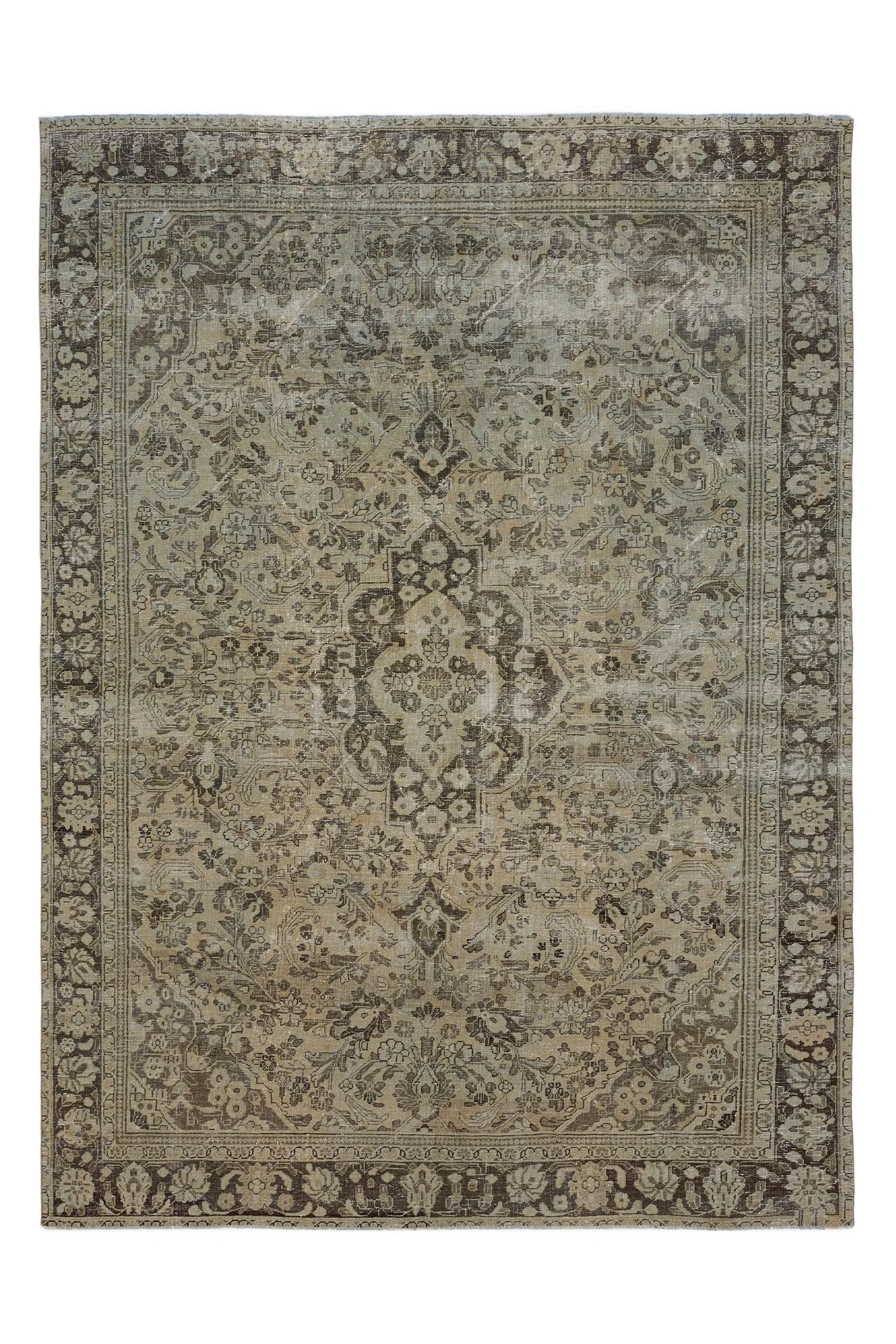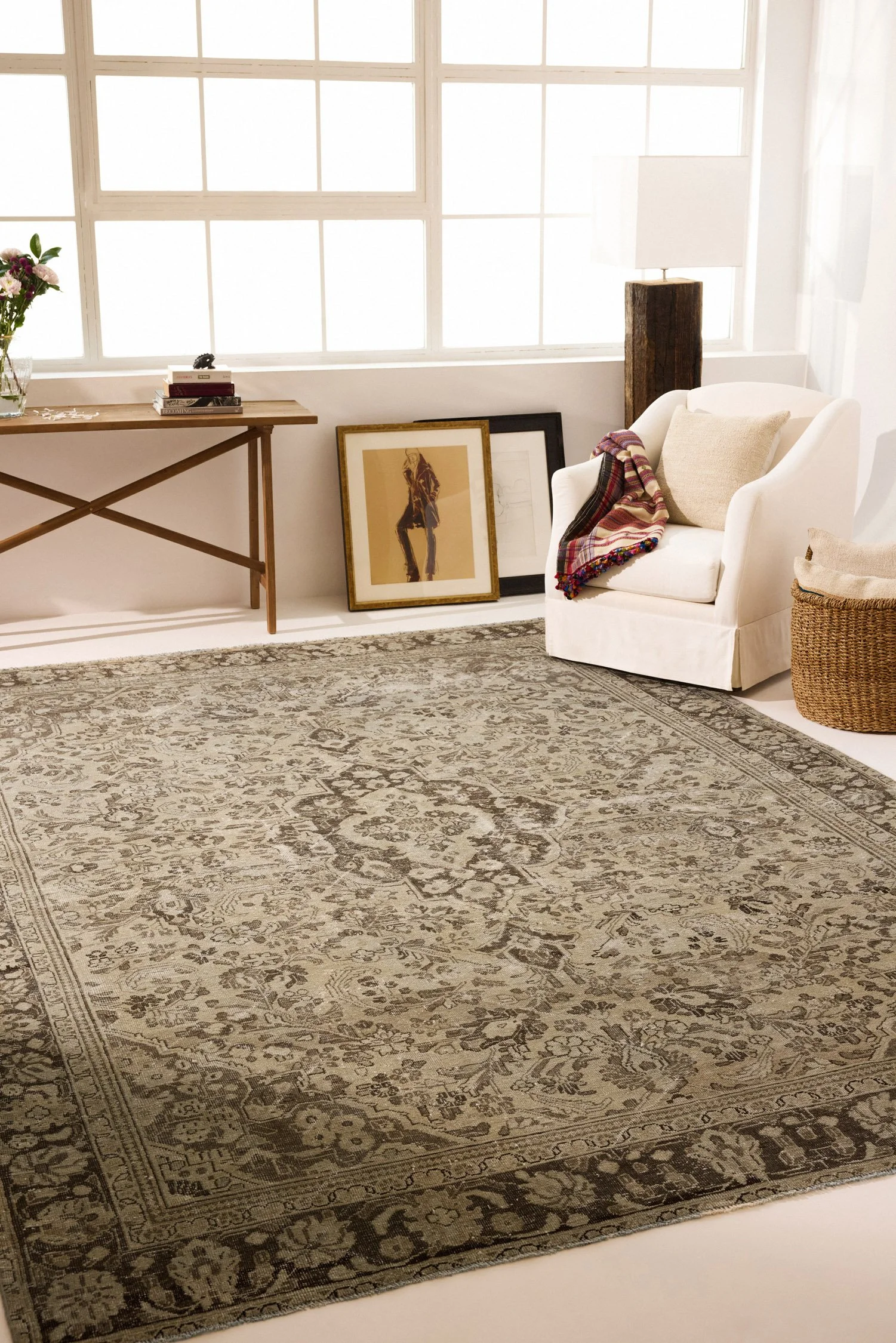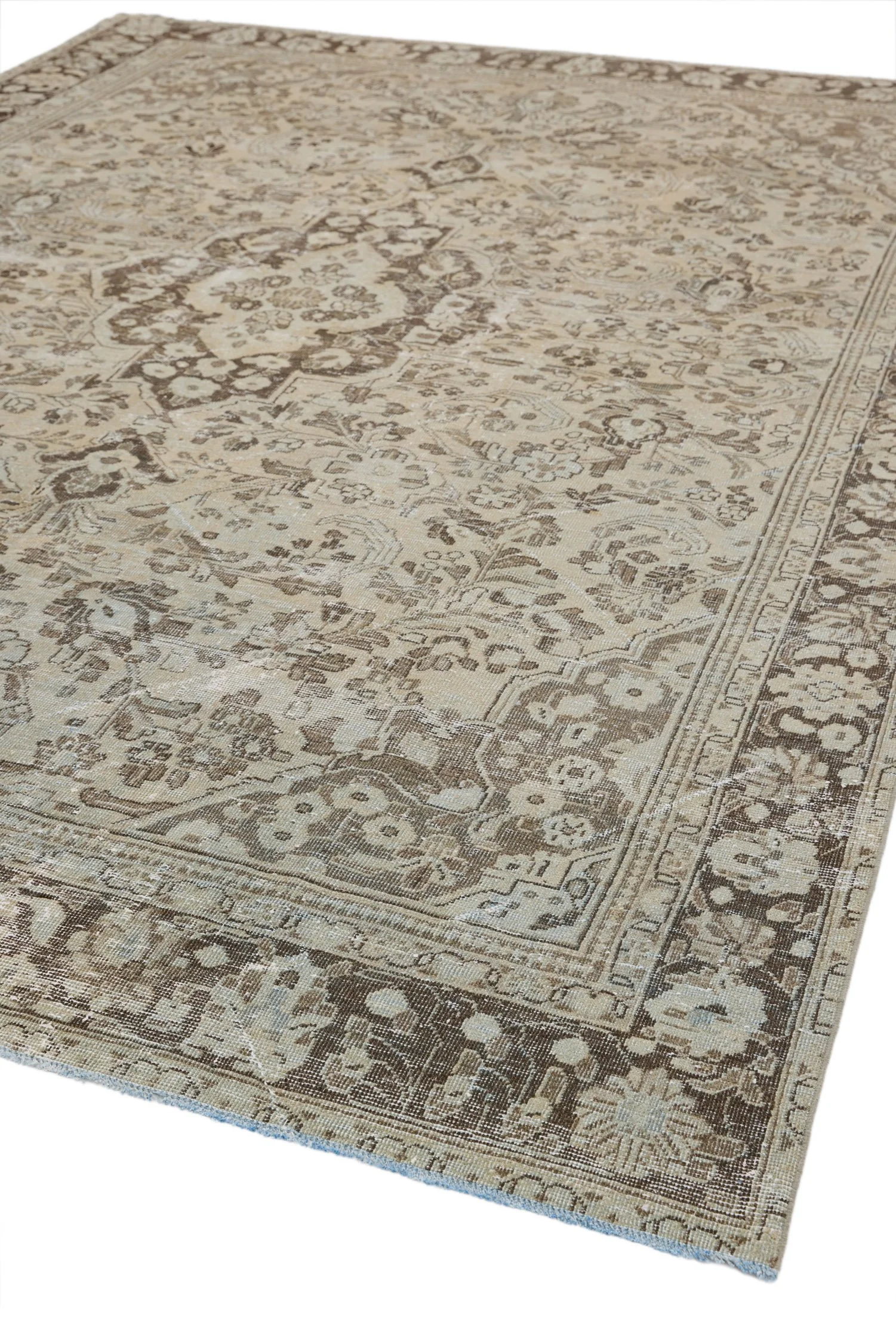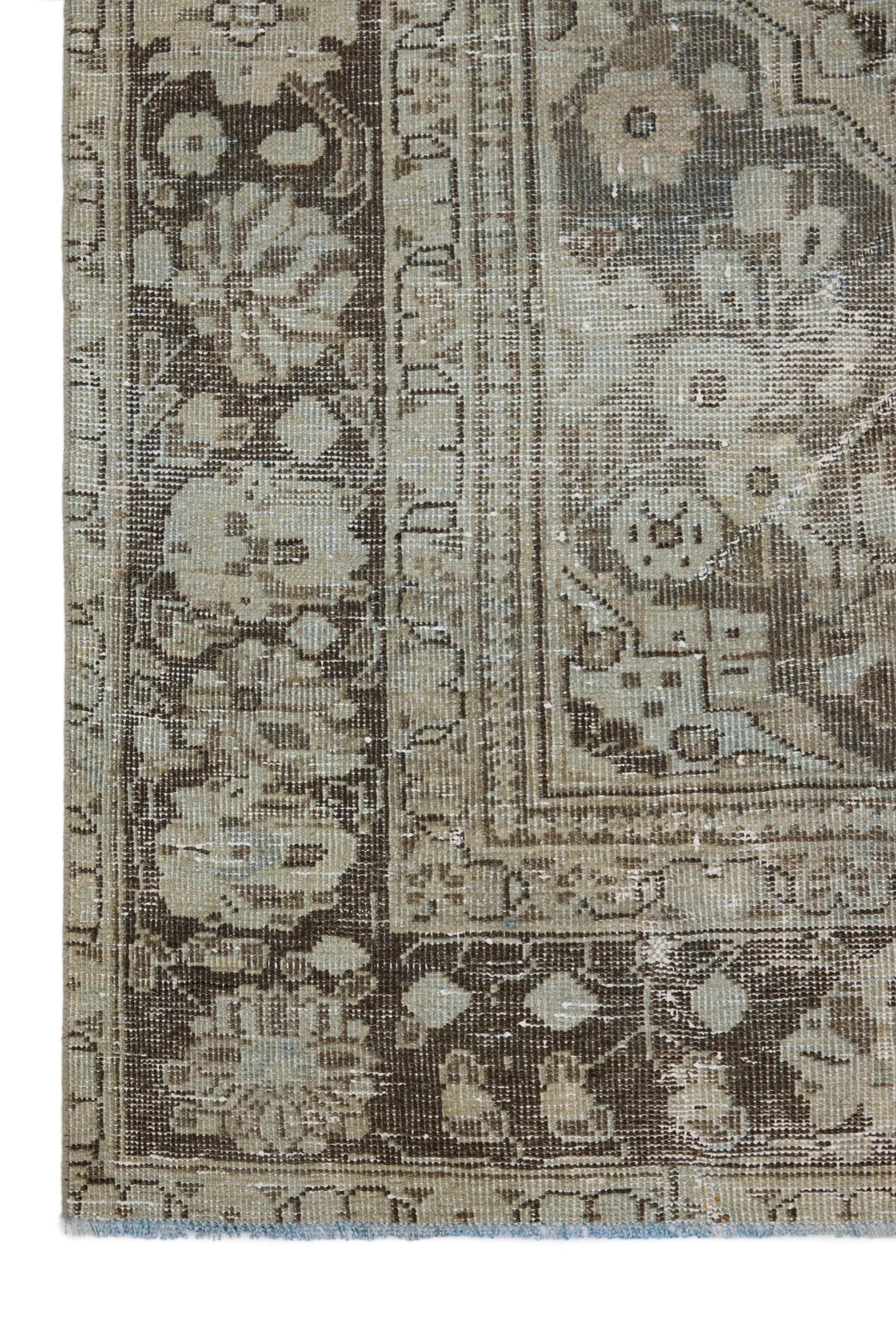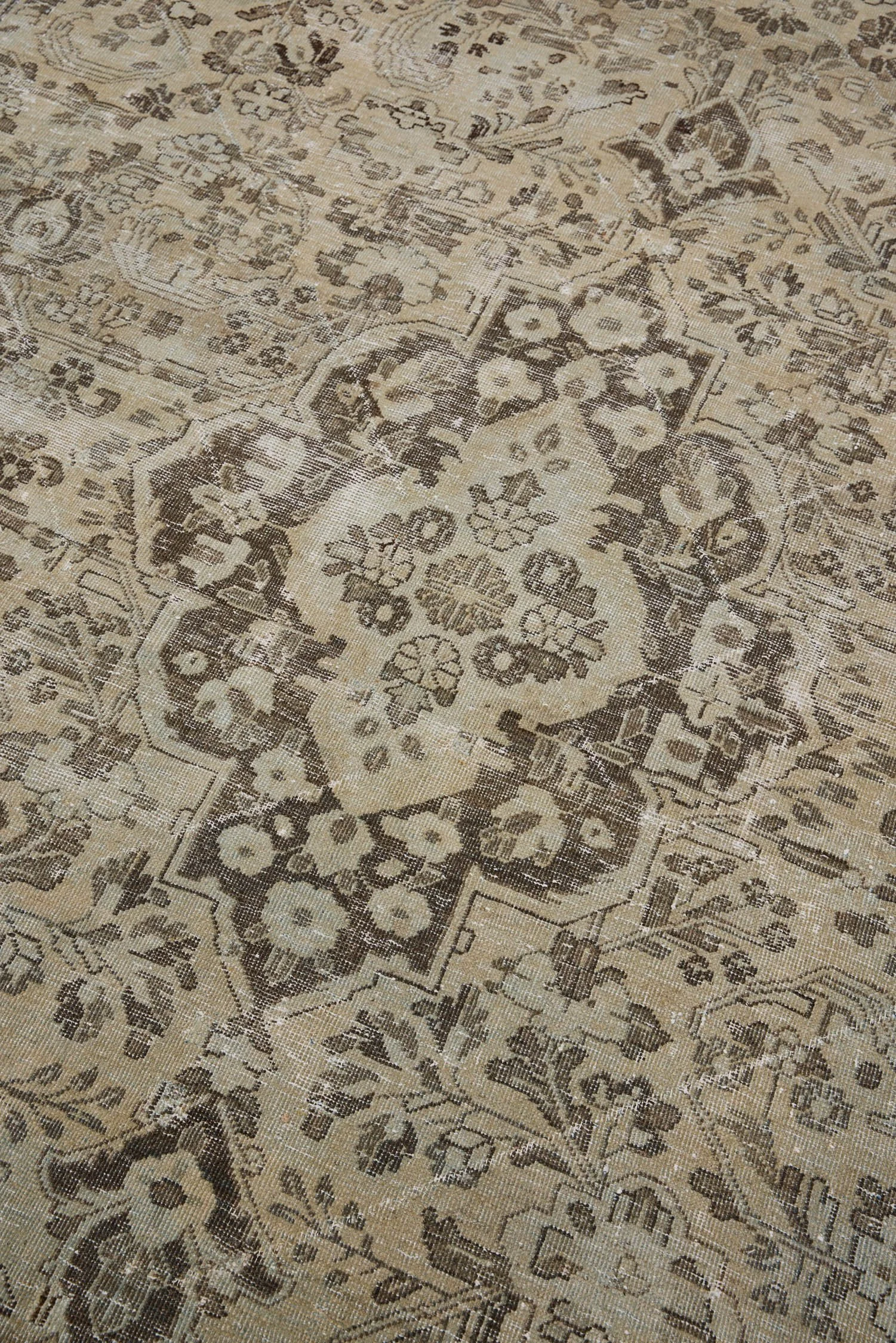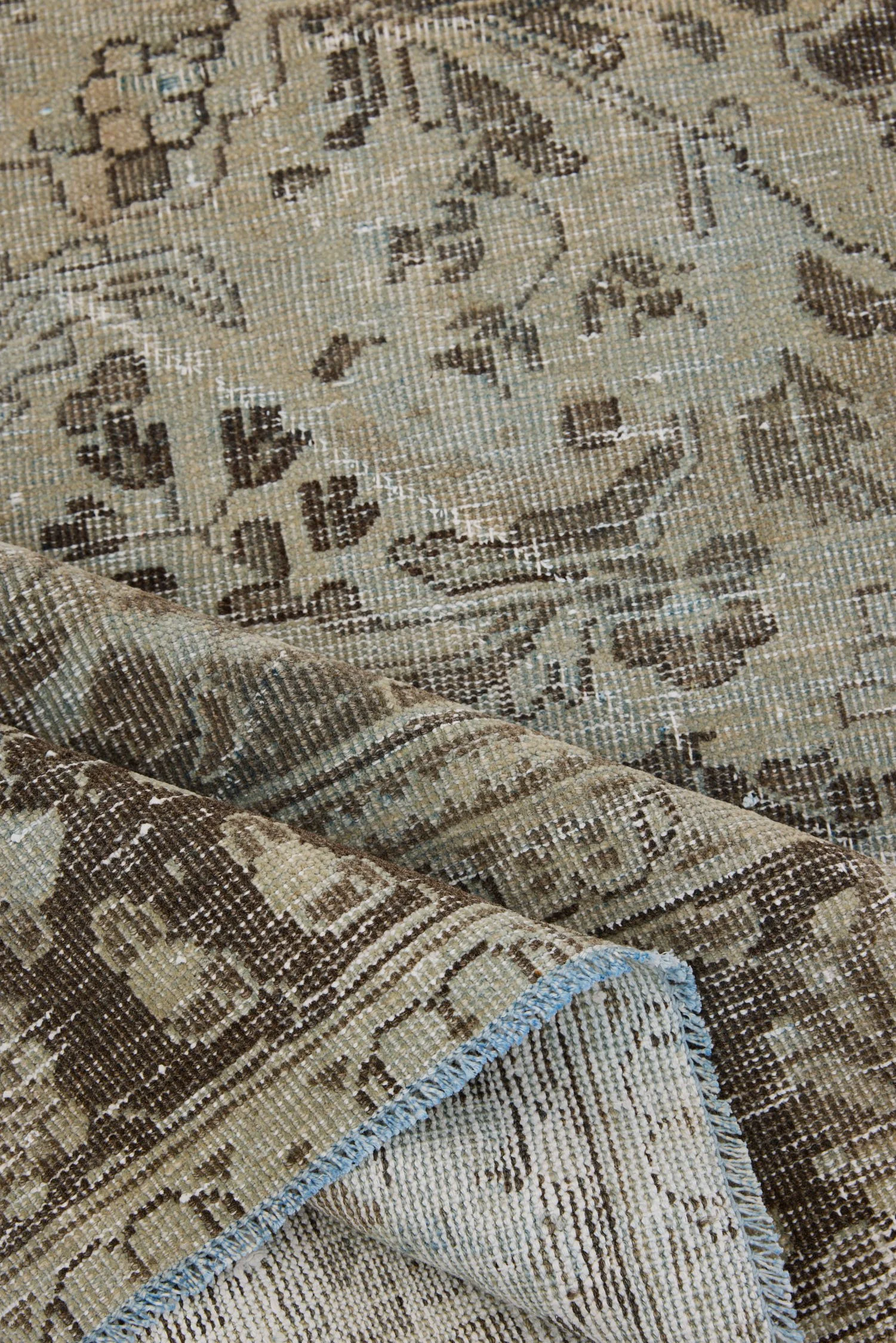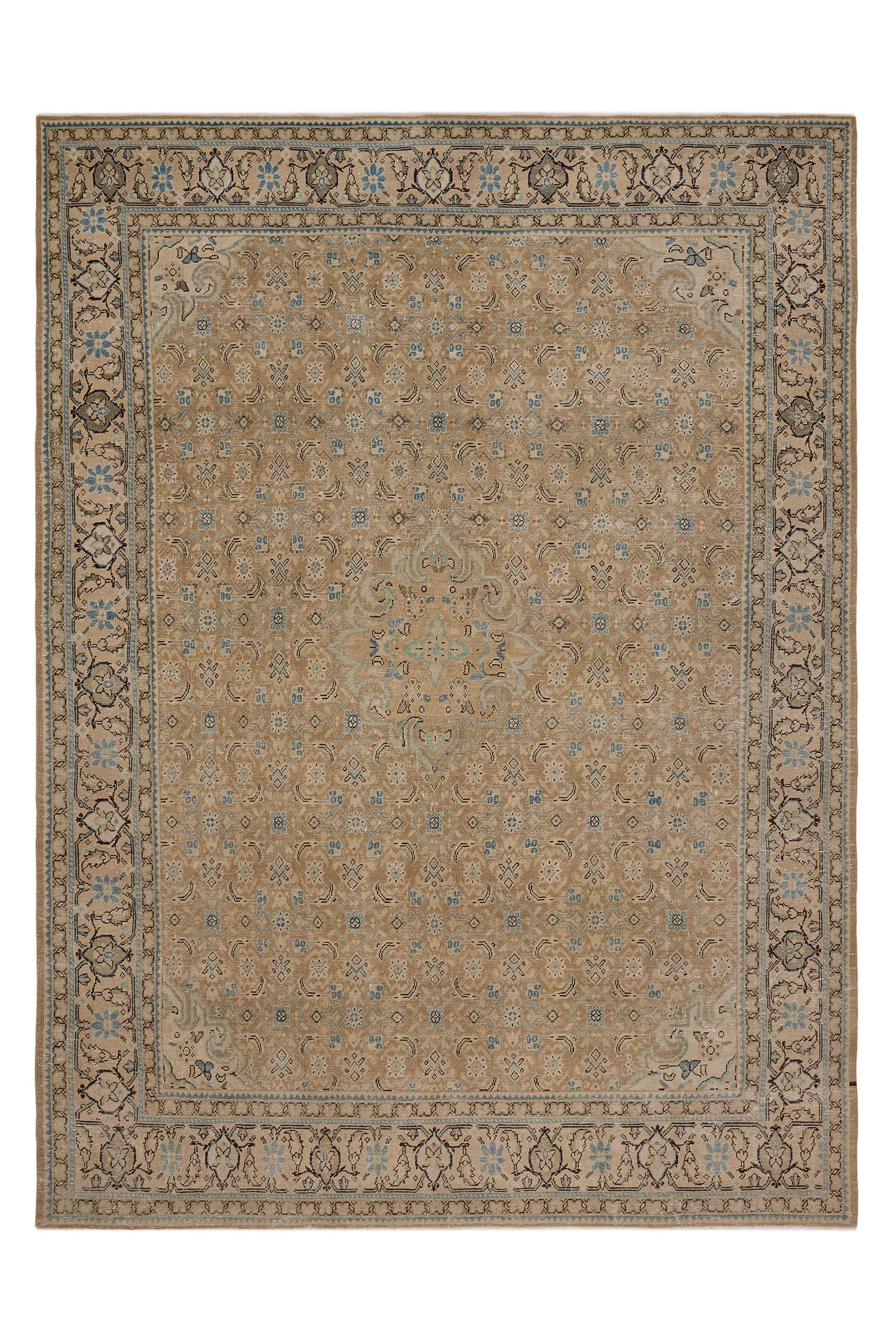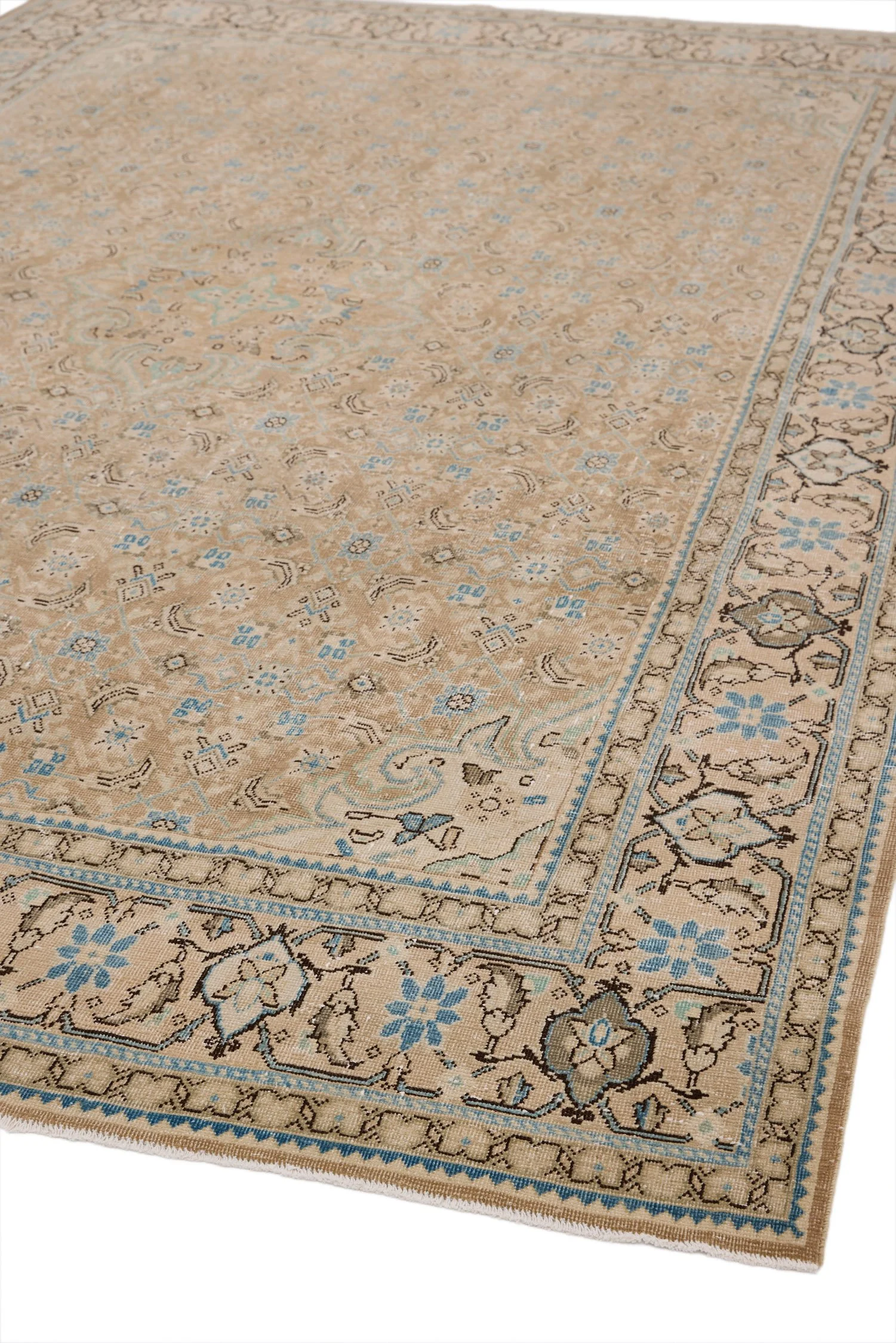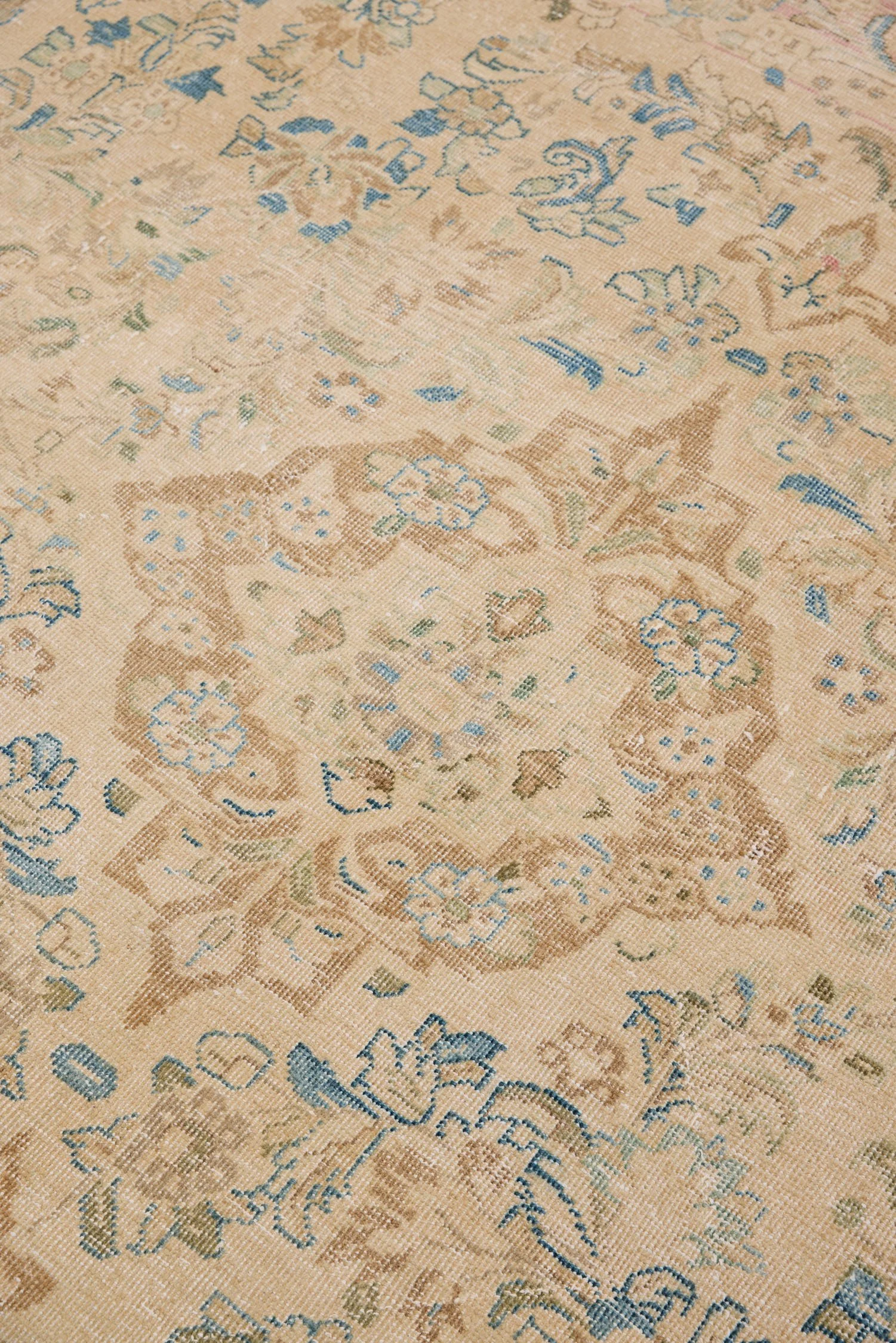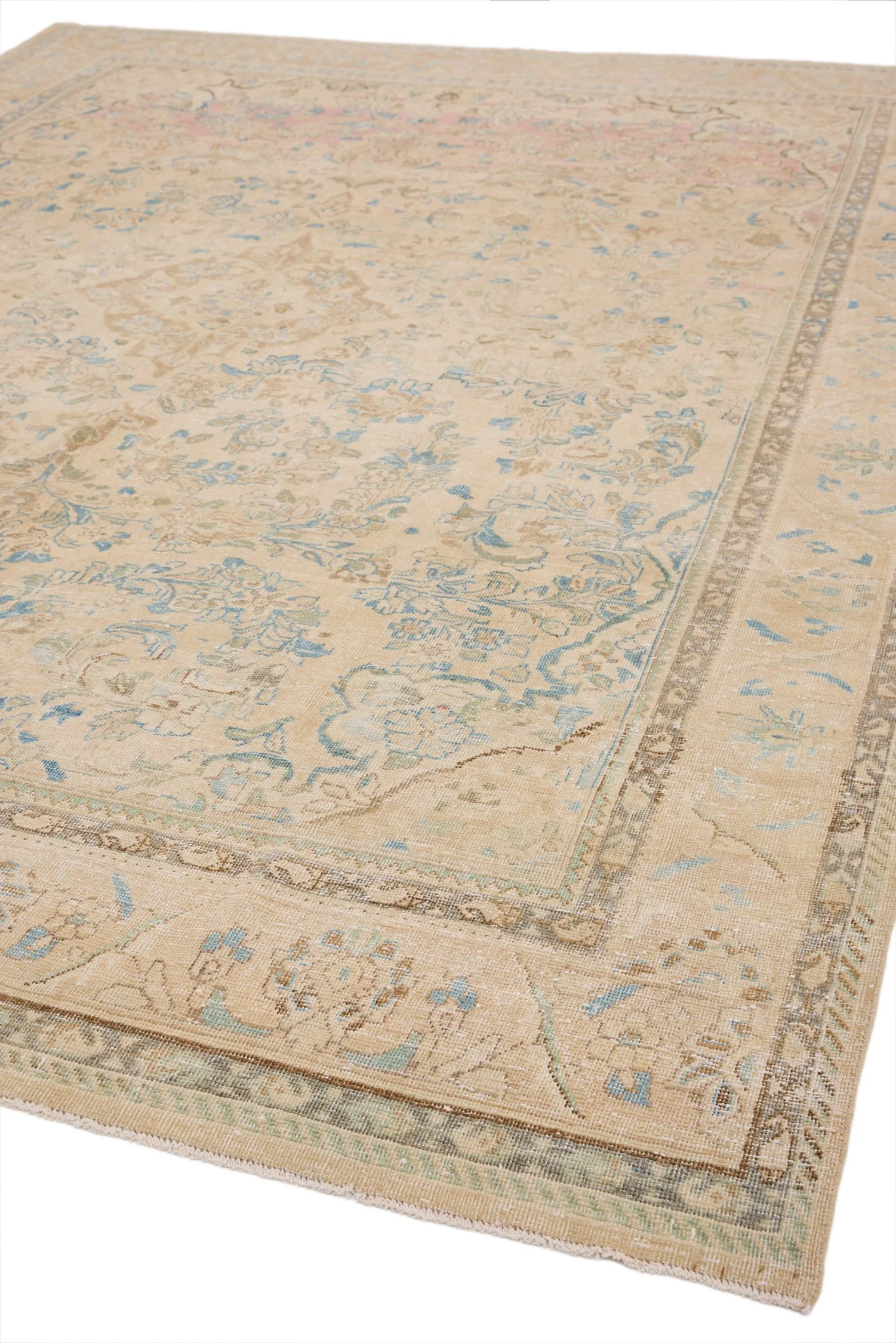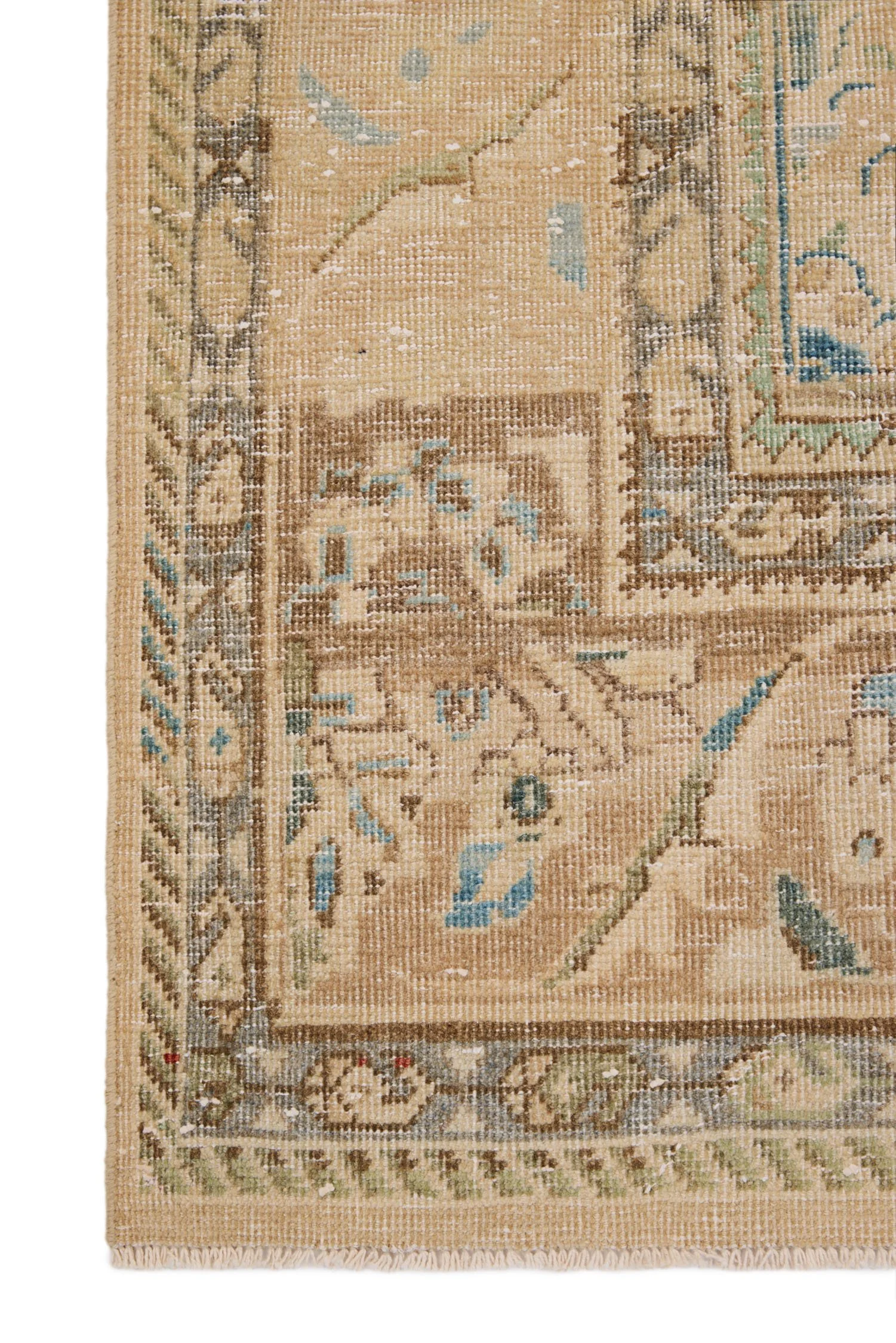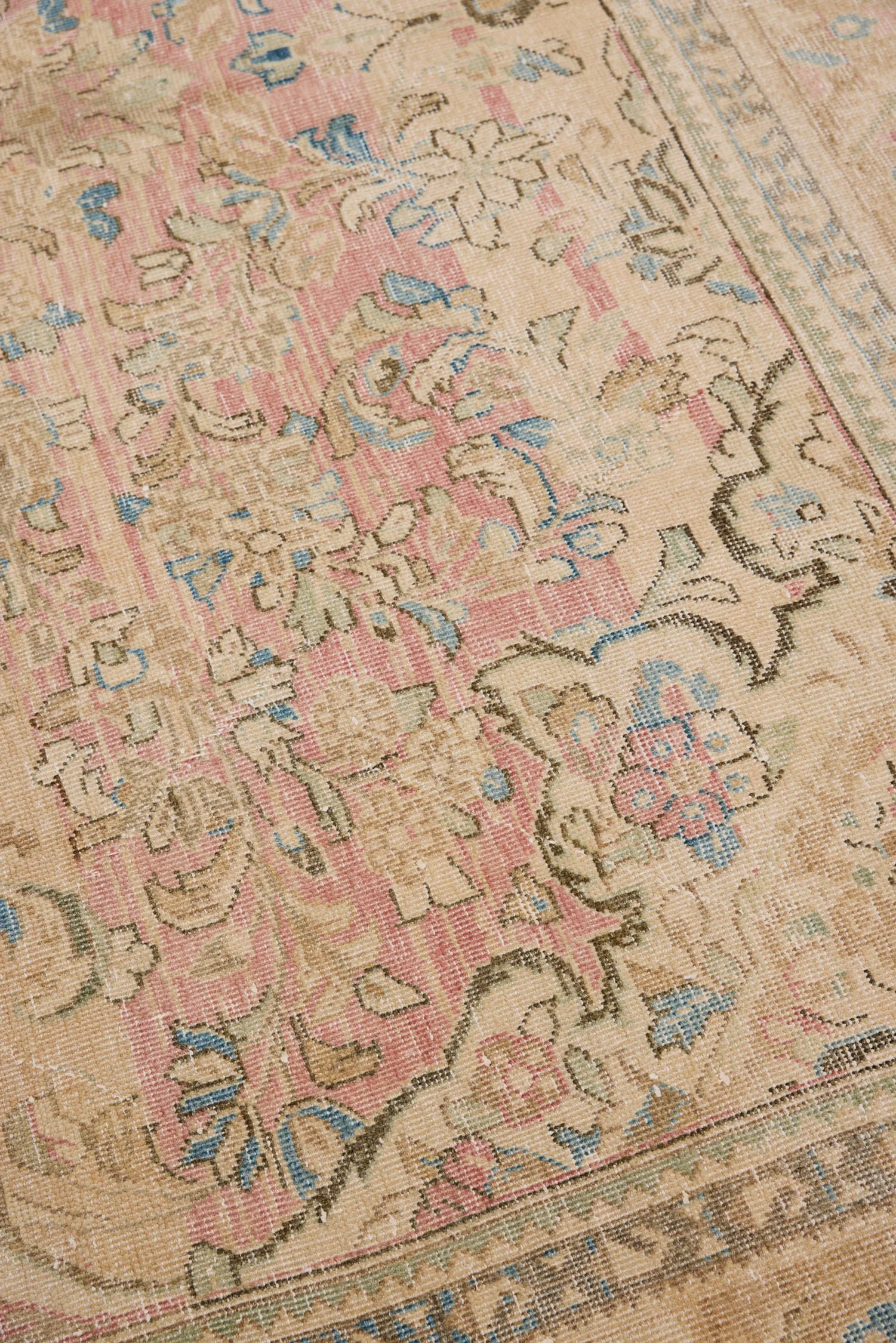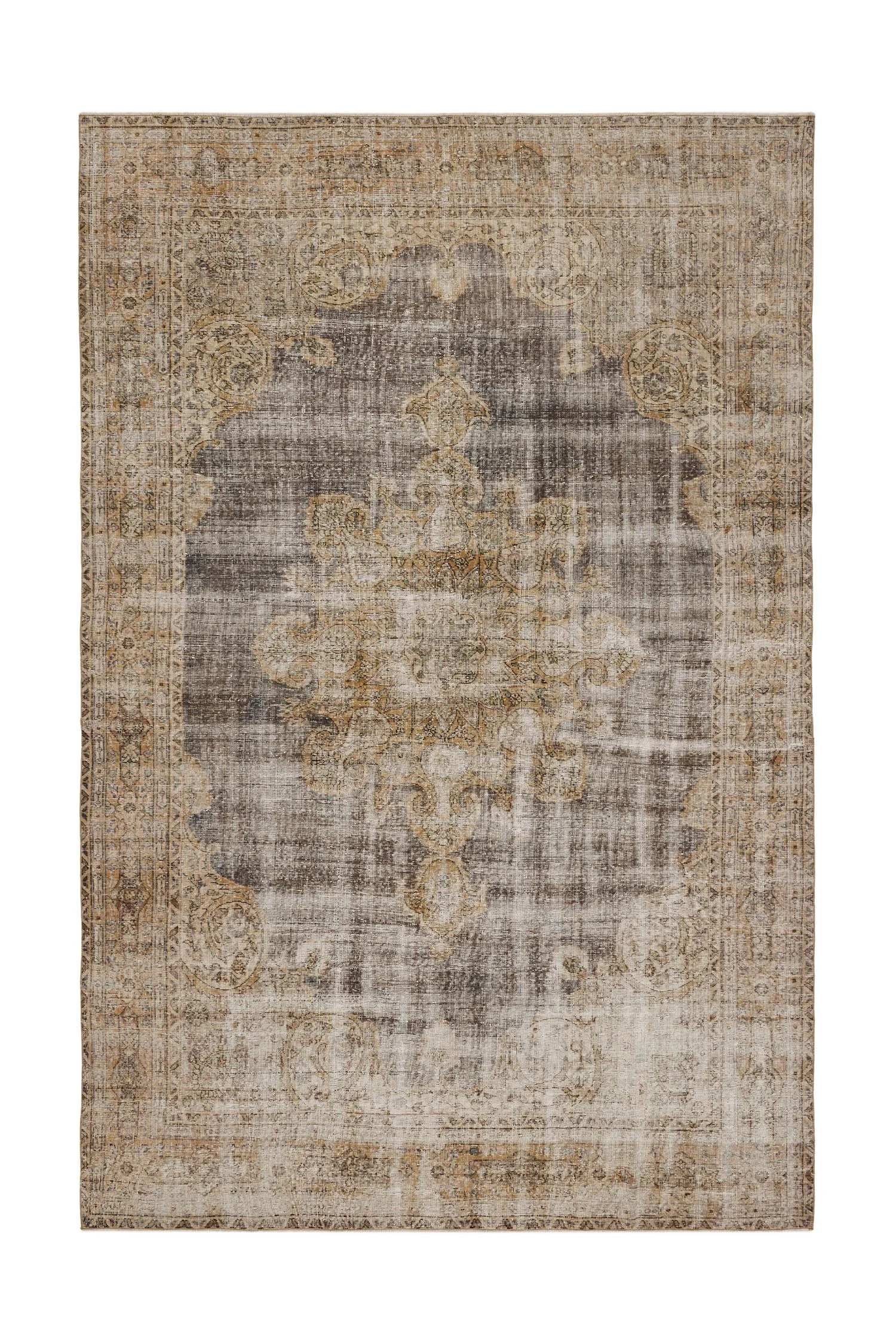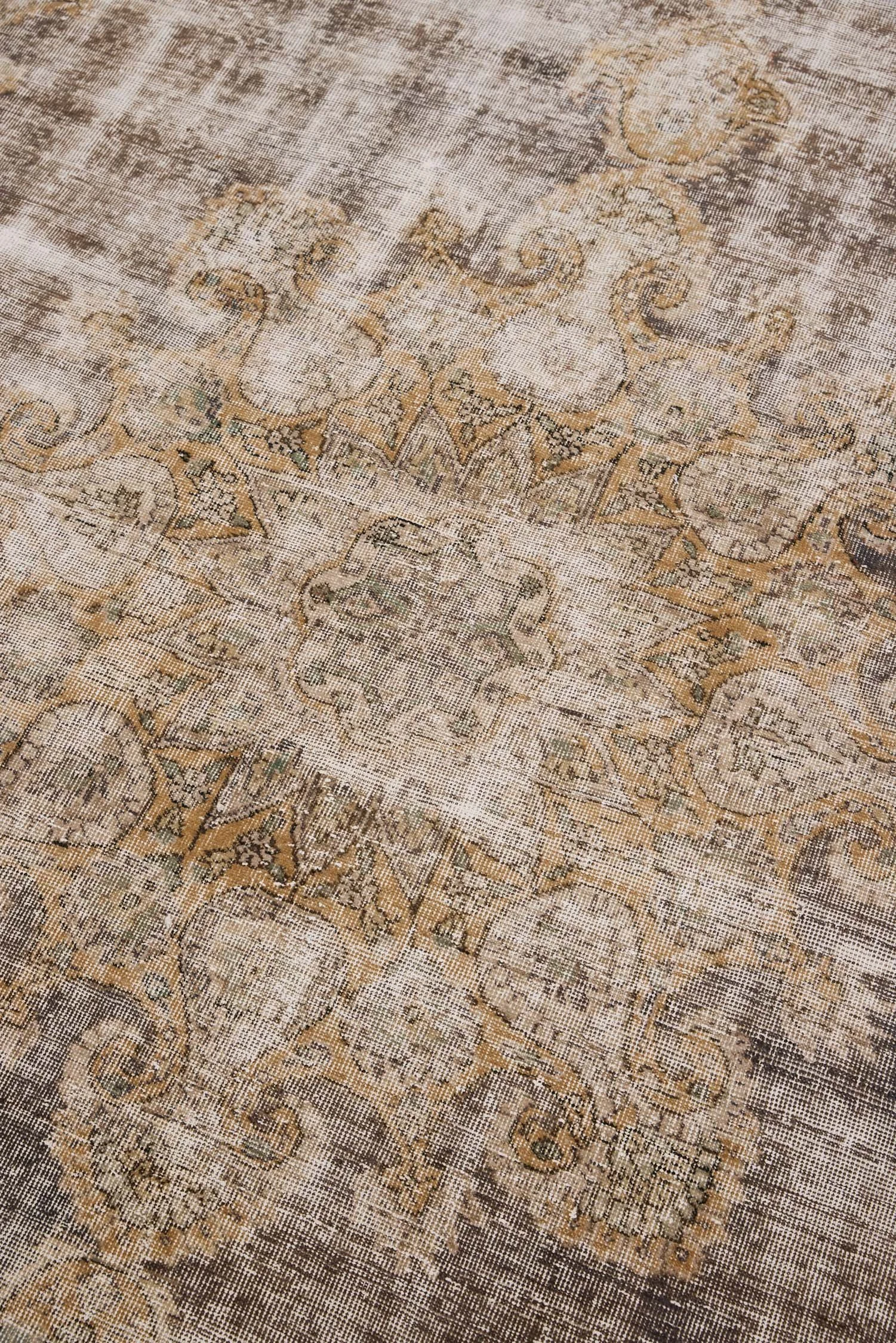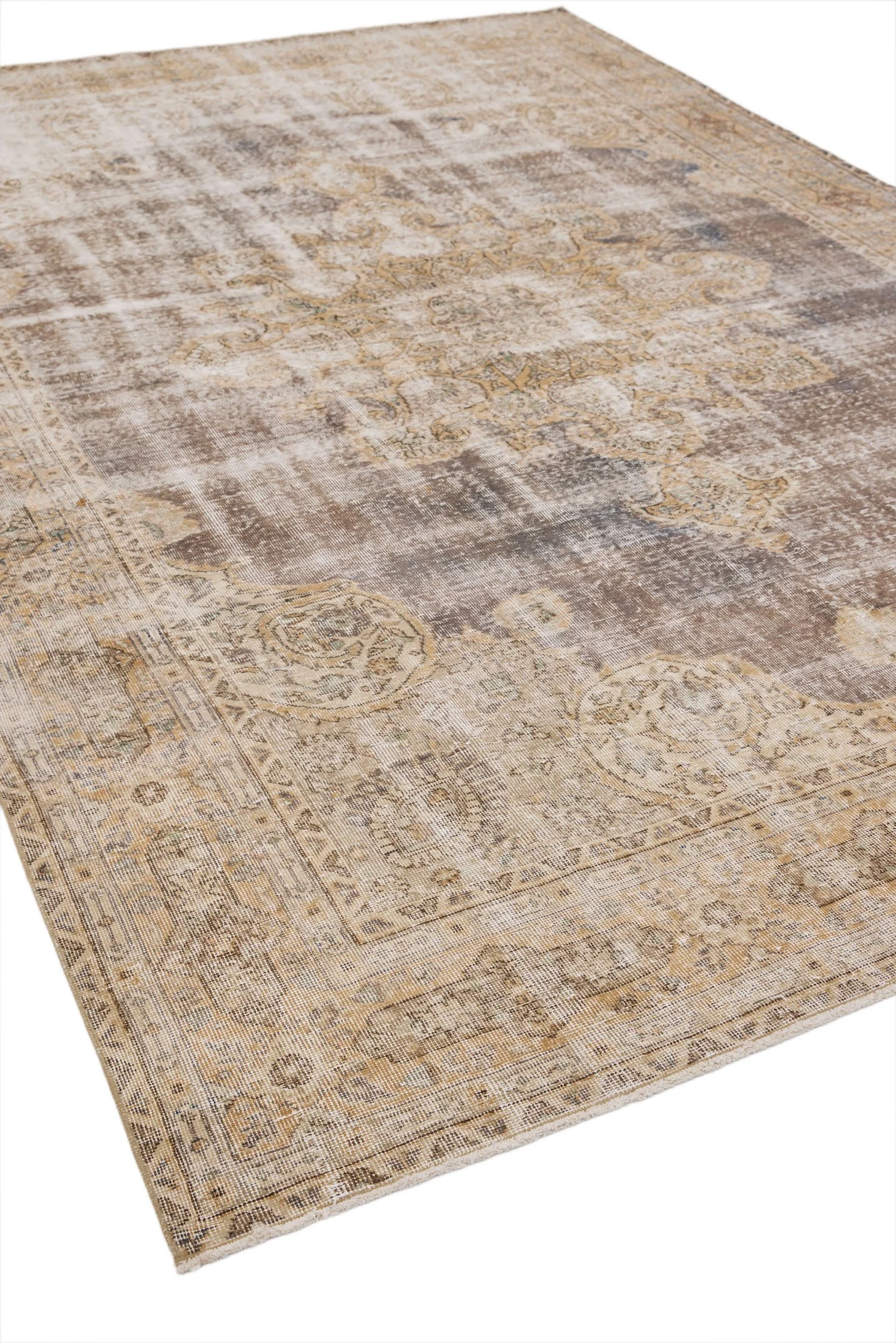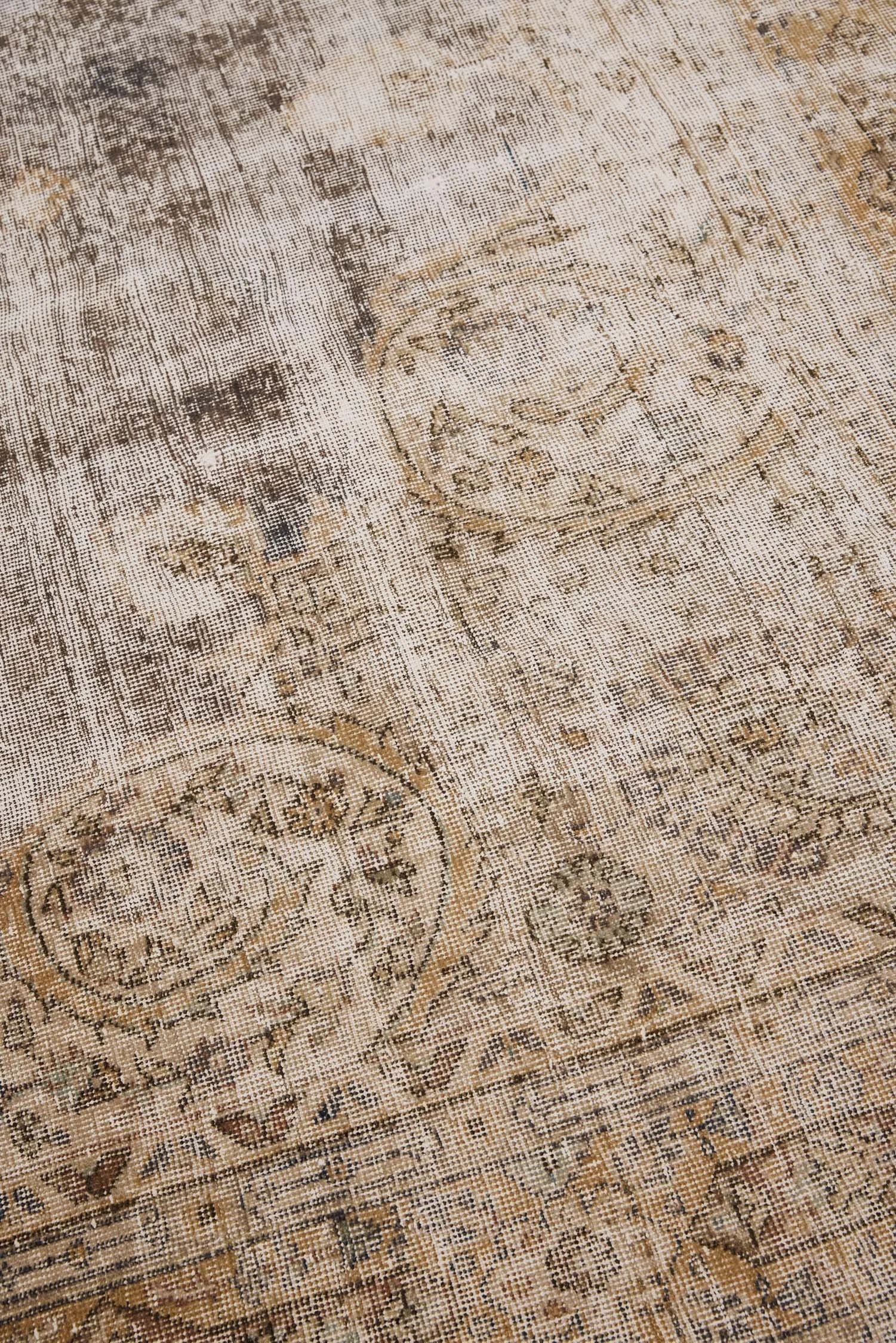Heritage and Craftsmanship
Tabriz workshops in the mid-20th century produced rugs that balanced technical precision with artistic ambition. Weavers worked with fine knotwork that allowed for intricate pattern development, often layering multiple design elements within a single composition. These pieces represented both the continuation of classical Persian weaving traditions and a response to evolving aesthetic preferences, resulting in works that felt simultaneously rooted in history and attuned to their moment.
Design Elements
The allover lattice pattern creates a field of geometric repetition, though time has blurred the boundaries between figure and ground. Where the pattern once stood in sharp relief, natural wear has created gradations that give the rug an almost atmospheric quality. The diamond medallion provides a focal point without dominating, its edges blending into the field through organic fading rather than deliberate design. Abrash shifts move across the surface, showing how different dye lots interacted over the course of the rug's creation and subsequent decades of use.
Placement
At 9'8" x 12'8", this rug grounds expansive living areas, formal dining rooms, or generous bedroom spaces. The muted palette of taupe, charcoal, and teal works within interiors that favor restrained color schemes, while the distressed quality brings textural interest without visual competition. Its scale and neutral tones make it particularly effective in spaces where the rug serves as foundation rather than focal point, supporting rather than dictating the room's overall aesthetic direction.
Care Recommendations
To preserve the rug's beauty:
Rotate periodically for even wear
Vacuum regularly using a suction-only setting
Address spills immediately by blotting, never rubbing
Professional cleaning recommended annually
Avoid direct sunlight to maintain color integrity
Distressed Tabriz rugs occupy an interesting position in the vintage textile market. Where some collectors prize pristine condition, others recognize the visual depth that comes from natural wear and fading. The abrash and time-worn surfaces create complexity that no new production can replicate, offering interiors a sense of lived history and authentic patina that resonates particularly well with contemporary design sensibilities favoring imperfection and character over flawless uniformity.


